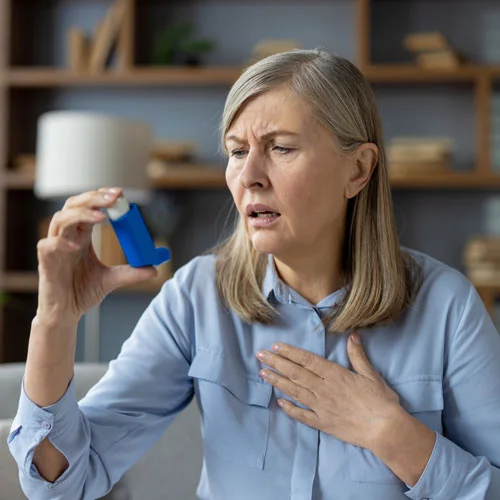Life rarely runs to schedule. A cold that knocks you down, a migraine that won’t quit, or the sudden need to care for your child can all dismantle your plans for the day. In most cases, workplaces, schools, or insurers want proof of why you’re not around, and that usually means a medical certificate, one that you can manage without having to step outside.
Online medical certificates bring convenience and comfort that are most needed when dealing with illness. So, here we are with a blog elaborating how to receive a medical certificate without having to toil for it.
What Is an Online Medical Certificate?
After a short telehealth consultation with a registered doctor, you receive a certificate that carries the same weight as one picked up in person. Employers, schools, and insurers across Australia treat it as valid.
These certificates do more than say you’re unfit for work or study. They can also confirm that you’re looking after someone else, or in some cases, recommend lighter duties for a period.
Why Online Medical Certificates Are Recognised
Telehealth services were made a permanent feature of Medicare in Australia as of January 2022. Since then, certificates issued through telehealth—provided by qualified doctors—have been widely accepted by employers, schools, insurers, and other institutions.
The Department of Health’s 2024 review shows that telehealth now accounts for more than 20 percent of General Practitioner (GP) services across the country. Older Australians, in particular, report high satisfaction, while uptake continues to grow among all age groups. Its mainstream presence and strong regulation ensure the credibility of online medical certificates remains firm.
Also Read – Are Online Medical Certificates Legal in Australia?
Benefits of Getting a Medical Certificate Online
People lean on online medical certification due to variousreasons, including:
- Certificates in the same hour, sometimes faster
- No dragging yourself to a clinic while you’re sick
- Clear pricing upfront, no guessing game
- Real doctors checking your details, not automated bots
- Delivery straight to your inbox or phone
- Longer hours, often early morning till late at night
Common Situations Covered
An online medical certificate works for the usual day-to-day issues where a hands-on examination isn’t needed. Think along the lines of:
- A couple of days off for flu, colds, or headaches that stop you from functioning
- Staying home with a child or older parent who needs care
- Resting after a small injury or minor procedure
- Documentation for schools or universities
- Formal leave for workplaces that require paperwork
Step-by-Step Process to Obtain a Certificate
The process isn’t complicated. You just:
- Select the medical certificate option on the DocMate site.
- Fill out the quick online questionnaire.
- An AHPRA-registered doctor reviews your request.
- If needed, the doctor may call to discuss further.
- Receive your signed certificate by email, ready to forward or print.
How Quickly Certificates Are Delivered
Most of the time, you’ll have it within an hour. Services usually run seven days a week, often outside the old “9 to 5” window. That makes a difference if you’re a shift worker or juggling family duties at odd times.
Preparing for the Online Consultation
A bit of prep helps things move quickly:
- Keep your ID handy
- Write down your symptoms so you don’t forget details
- Find a quiet spot in case the doctor calls
- Double-check your phone or internet connection
- Keep an eye on your email or SMS for the certificate
When Online Certificates May Not Be Suitable
Online certificates are convenient, but they’re not always the right option. Some health concerns, like the following, need an in-person visit for proper care:
- Severe or worsening illness that needs a physical exam
- Chest pain, breathing issues, or high fever
- Injuries requiring scans or direct assessment
- Ongoing or complex health conditions needing regular management
Telehealth’s Role in Modern Healthcare
Since 2020, telehealth has completely shifted how people in Australia access doctors. It cuts down travel and makes life easier for people in rural or remote areas.
Research in BMJ Open (2023) showed that telehealth doesn’t reduce the quality of care but does lower costs and improve efficiency. Surveys point out that Australians not only trust it but also find it comfortable and convenient. Two significant reasons why it’s now part of mainstream healthcare.
How Digital Health Tools Support the Process
Telehealth links up with existing systems, which is why it feels seamless. My Health Record, for example, keeps information secure and accessible when needed. Digital prescriptions are another good example, since there are over 115 million issued from the time they were introduced. Medical certificates slide into this same framework, making them just as reliable and quick.
Value for Rural and Regional Communities
If you live away from big cities, telehealth isn’t just convenient, but often essential. It saves hours of travel, helps keep things discreet in smaller communities, and gives flexibility for farming families or shift workers. Even services like telepharmacy and digital medical chests through the Royal Flying Doctor Service show how much healthcare has changed for the better in these regions.
Final Thoughts
Online medical certificates are trusted, efficient, and recognised everywhere they need to be. For most people, that means being able to rest, recover, and still meet obligations without piling on stress. With telehealth now built into the healthcare system, this service is here to stay.
DocMate stands out by providing doctor-led telehealth services that are quick, dependable, and priced fairly. From prescriptions and certificates to weight management, we’ve made healthcare practical and accessible. So, feel free to reach out when in need.






